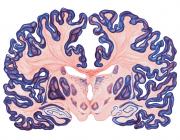A biased competition theory for the developmental cognitive neuroscience of visuo-spatial attention
Publication Year
2019
Type
Journal Article
Abstract
Selective attention is crucial for navigating natural visual environments, which are often crowded with too many objects to process simultaneously. Research over the past few decades has led to influential theories describing neural mechanisms underlying selective attention in the adult brain. However, how children come to achieve adult-level selective attention functions has been explored much less. Here, we discuss specifically the existing literature on visuo-spatial attention development based on a theoretical framework that is grounded in biased competition theory, while integrating more recent evidence from neuroimaging and electrophysiology. In this forward-looking review, we emphasize that selective attention functions operate through interactions between the developing sensory cortices and fronto-parietal control network. Our framework may prove useful in probing selective attention functions in typical and atypical development.
Journal
Current Opinion in Psychology
Volume
29
Pages
219-228

